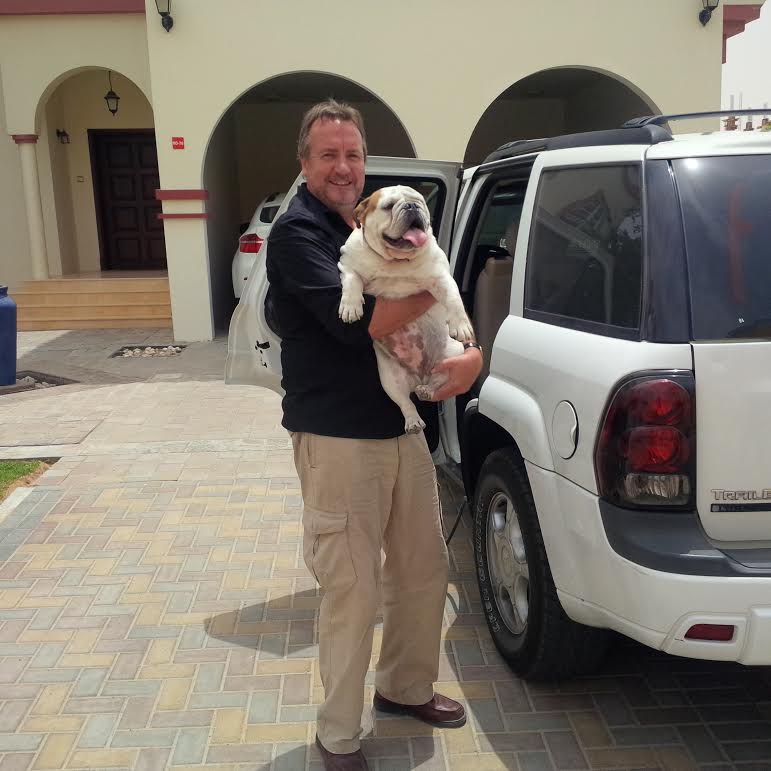- City Fajr Shuruq Duhr Asr Magrib Isha
- Dubai 04:26 05:44 12:20 15:47 18:50 20:08

With the debate whether a seatbelt in the rear seat of a car should be made mandatory still in the air, it is maybe too early to make claims about who and what should be restrained in the backseat. However, thinking safety is never a luxury.
When it comes to our children, most people are keen on proving the best solutions to have a safe drive. But where does the dog sit? Can he freely move around in the car, or should he be restrained with a seatbelt? And is a seatbelt enough, or is a cage required?
It has been established that in a road accident, a dog on the backseat is just as vulnerable as any other passenger. A dog on the front seat is even more likely to be harmed in an accident, as the unfolding of an airbag can be fatal.

Further, it is not only the safety of the dog we should be taking in consideration. A dog that is able to move freely in the car may suddenly be on your lap, or on the dashboard. A nervous dog may bark so loud that it leads to the distraction of the driver. In other words, there are plenty of reasons to think safety when it comes to your pet, too.
There is currently no law when it comes to having a dog in the car, says Mohammed Saif Al Zafeen, Head of the Federal Traffic Council. However, that does not mean it is not an issue to consider. “It is within the owner’s responsibility to judge whether it is safe to have the dog in the car or not,” he believes.
British expat Arthur Obyrne knows as no other person how to deal with the extra traveller, as he has made it his daily business.
Running Pet Taxis Dubai, it is his job to safely transport any pet from A to B.
When it comes to dogs, this requires some background knowledge, he admits. “Not every dog is the same. We always discuss the personality of the dog with the owner before we take off.”
While some dogs are relatively calm, others may have a temperament. When a dog is likely to react to the ride, it is best to keep it in a cage, Arthur explains.
“Some dogs are small and easily fit in a cage, while other dogs are too large for a cage and require other measures.
“We have, for example, harnesses for the dog which can be clipped to the seatbelt. In these ‘inertia seatbelts,’ the dog can still move around, but stays at its place.”
In all cases, the seatbelt is always used, Arthur acknowledges. Either attached to the harness, to the dog cage or strapping the dog directly, the dog must always be secured by the safety measure.
Liz, a South African owner of two dogs agrees. “Both my dogs are strapped with a seatbelt. One is larger than the other, so we got him a harness that could be clipped to the seatbelt. These dogs are like my children, so I would do everything to protect their safety,” she says.
“A seatbelt should provide safety to every passenger in a car, this means for the dog as well,” says Arthur, adding that he would support this to be a mandatory practice.
“I sometimes see people disregarding any form of safety in the car, even when it comes to their children. Mandatory seatbelts in the back for all passengers would be a good idea.”
Apart from assuring the stability of the dog in the car, the driver should be aware of the presence of the extra passenger, he advises.
“You should drive carefully, and anticipate more on the road. It is like driving with children, you are more cautious.”
![]() Follow Emirates 24|7 on Google News.
Follow Emirates 24|7 on Google News.